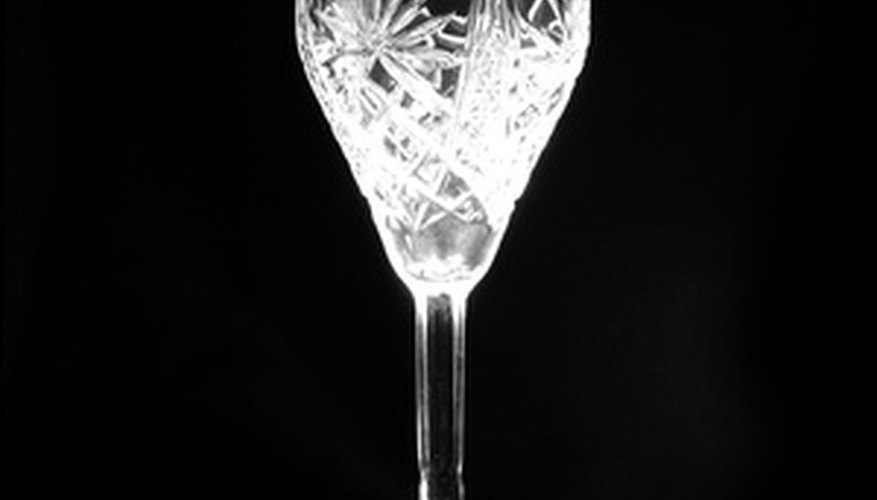Objects have been made from glass for over 3,500 years. The manufacturer of elegant glassware can be traced back to the time of the Egyptian pharaohs. But the glittering substance remains fragile. Even the tiniest chip can ruin the look of an entire set of wine glasses or make drinking from a glass hazardous. Fortunately, small imperfections can be polished out of the surface of a glass, to leave it shining and glowing like new.
- Objects have been made from glass for over 3,500 years.
- Fortunately, small imperfections can be polished out of the surface of a glass, to leave it shining and glowing like new.
Put on gloves and eye-protection goggles. Fine glass dust can be a hazard if it gets onto your skin or into your eyes.
Wet a sheet of coarse-grade emery paper. Pin it to a wooden board using drawing pins.
Upturn the glass and place it, rim side down, on the emery paper. Rub the damaged area of the glass gently on the emery paper. Use a circular motion, pressing down lightly, to ensure a symmetrical result.
Wipe away the dust from the glass with a soft, damp cloth. Inspect the glass in the bright, strong light of a desk lamp. If the edges of the chip are still well defined, rub the glass again on the coarse emery paper. Continue until the defined edges of the chip have been eroded and the damaged area is no longer easy to distinguish from the surrounding glass.
- Wet a sheet of coarse-grade emery paper.
- If the edges of the chip are still well defined, rub the glass again on the coarse emery paper.
Switch to a wet sheet of medium-grade emery paper and when this is pinned to the board, rub the glass over it, again using a circular motion.
Wipe away the dust with a soft, damp cloth and check the glass in the light of the desk lamp. Rubbing with the medium-grade emery paper should reduce any scratching or scuffing caused by the coarse-grade paper, giving a smoother appearance to the damaged area of the glass. Repeat the treatment, until the scratching and scuffing is reduced as much as possible.
Switch to a sheet of wet, fine-grade emery paper and pin this to the board. Rub the glass rim very gently on the emery paper, to reduce the visibility of the finest scratches. If the glass still appears scuffed or cloudy, use a pumice stone to very gently rub the area, always sticking to the same circular motion as before. Pumice is traditionally used to give a final polish to cut glass.
- Switch to a wet sheet of medium-grade emery paper and when this is pinned to the board, rub the glass over it, again using a circular motion.
- If the glass still appears scuffed or cloudy, use a pumice stone to very gently rub the area, always sticking to the same circular motion as before.
Wipe away the dust with a soft, damp cloth. Inspect the glass once more, in the light of the desk lamp. If any small scratches are still visible, rub the glass again on the emery paper, or with the pumice, until the rim of the glass presents a smooth, unscratched surface.
- Wipe away the dust with a soft, damp cloth.
Wipe away the dust with a soft, damp cloth. Allow the glass to dry.
- Wipe away the dust with a soft, damp cloth.
Apply a dab of polish to the rim of the glass. Rub away the polish with a soft, dry cloth, using a gentle circular motion, to give a finishing sheen to the restored glass.
TIP
Practise by polishing scratches or chips from a dispensable piece of glass, such as a bottle or jam jar, until you are confident you have mastered the technique. Consider having the glass professionally restored if it is very valuable, or if the damaged area is bigger than a small chip. A grinding wheel is not essential for removing small chips from glass and should be avoided, as its surface may be too coarse for the purpose. Before applying the polish, clean the glass by leaving it overnight in denture-soaking solution. This will remove "cloudy" surface defects that are caused by a chemical build-up on the glass and that can sometimes appear to be scuffing or tiny scratches.
